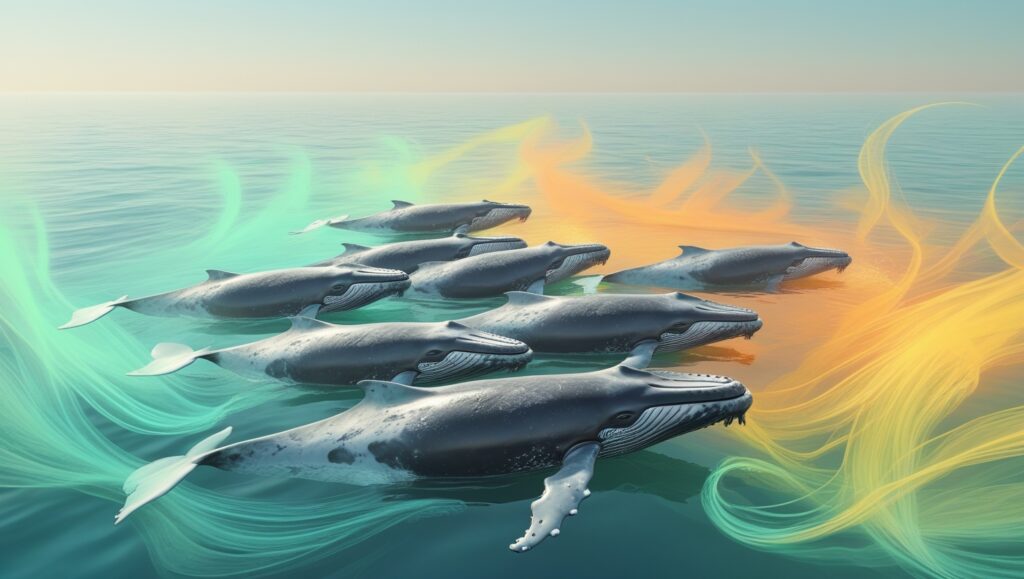Have you ever wondered how animals find their way during their epic migrations? Whether it’s a bird flying thousands of miles to escape the winter, or a sea turtle returning to the exact beach where it was born, the ability of animals to navigate across vast distances is one of nature’s most incredible mysteries. Let’s dive into the science behind animal migrations and uncover how they pull off these amazing feats.
Why Do Animals Migrate?
Migration is often a matter of survival. Animals move to find better food sources, escape extreme weather, or reproduce in safer environments. But migration isn’t a simple journey; it’s a carefully planned adventure. Imagine traveling across continents without a GPS—that’s what these creatures do every year. So, how do they do it?
Navigation Tools: Built-In Compasses

Animals use a variety of natural tools to guide them:
- Earth’s Magnetic Field: Many animals, like birds and sea turtles, can sense the Earth’s magnetic field. This invisible force acts like a built-in compass, helping them figure out which direction to go.
- The Sun and Stars: During the day, some animals use the position of the sun to navigate. At night, nocturnal travelers like certain bird species rely on constellations to stay on course.
- Landmarks: Animals with excellent memory, such as elephants and wolves, use mountains, rivers, and even man-made structures to guide their journey.
- Sense of Smell: Salmon famously use their incredible sense of smell to return to the rivers where they were born. Each river has a unique scent that acts like a homing beacon.
Fun Fact #1: Monarch Butterflies’ GPS
Monarch butterflies migrate up to 3,000 miles to escape cold winters. Despite being tiny and fragile, these butterflies are experts at navigation. Scientists believe they use the sun’s position and their internal biological clock to stay on track.
The Role of the Brain
For many animals, the brain acts as a supercomputer, processing all the information they gather from their surroundings. In birds, for example, a specialized part of the brain called the “cluster N” helps them navigate using the Earth’s magnetic field. Pigeons are another fascinating example—their brains contain tiny particles of magnetite, a mineral that helps them detect magnetic fields.
Fun Fact #2: Arctic Terns Are Travel Champions
Arctic terns hold the record for the longest migration in the animal kingdom. They travel from the Arctic to the Antarctic and back every year, covering up to 44,000 miles. That’s like flying around the Earth almost twice!
Weather and Environmental Cues

Animals are also great at reading environmental signs. Changes in temperature, wind patterns, and even the length of daylight can signal when it’s time to migrate. For example, whales migrate to warmer waters when they sense a drop in ocean temperature.
Fun Fact #3: Sea Turtles and Magnetic Maps
Sea turtles are born with an incredible ability to sense magnetic fields. This “magnetic map” helps them return to the very same beach where they hatched, even if it’s thousands of miles away.
Learning or Instinct?
One of the big questions scientists ask is whether migration is learned or instinctual. For many animals, like baby sea turtles and monarch butterflies, migration seems to be hardwired into their DNA. However, some species, such as cranes, need to learn the migration route from their parents or other members of their group.
Fun Fact #4: Elephants Never Forget
Elephants are known for their remarkable memory, which they use during migration. They can remember water sources and food locations from years ago, helping their herd survive even in harsh conditions.
Challenges During Migration
While migration is a natural marvel, it’s not without risks. Animals face challenges like predators, extreme weather, and habitat destruction. For example, migratory birds often collide with buildings or get caught in storms. Climate change is another growing threat, altering the timing of food availability and the routes animals take.
How Do Scientists Study Migration?
Tracking animal migrations is no small feat, but modern technology has made it easier. Scientists use methods like:
- GPS Tracking: Tiny GPS devices are attached to animals like birds and turtles to follow their movements in real time.
- Satellite Imagery: Satellites help track larger animals like whales and elephants.
- Tagging and Banding: For smaller animals, researchers use tags or bands to study their journeys.
These tools have revealed amazing details about where animals go and how they navigate.
Fun Fact #5: Zebras’ Colorful Migration
Zebras in Africa can migrate up to 300 miles in search of fresh grass. Scientists discovered that zebras remember specific routes through their keen sense of smell and familiarity with the terrain.
Why Should We Care About Migration?

Animal migrations are more than just fascinating; they’re vital for the health of ecosystems. Migrating animals help pollinate plants, disperse seeds, and balance food chains. For example, bees play a crucial role in pollination during their seasonal movements. Protecting these migratory patterns is essential for the planet’s biodiversity.
Final Thoughts
The next time you see birds flying in a V-formation or watch a nature documentary on sea turtles, take a moment to appreciate the incredible science behind their journeys. Animal migrations are not only a testament to the wonders of nature but also a reminder of the intricate connections that bind all life on Earth. Who knows? Maybe their remarkable abilities can inspire us to explore and protect our world more deeply.



